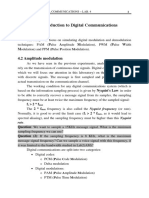0% found this document useful (0 votes)
122 views18 pagesSQL Joins: Types and Syntax Guide
1. The document discusses different types of joins in SQL, including natural joins, joins using the USING and ON clauses, outer joins, self joins, and Cartesian products.
2. It provides syntax examples for performing each type of join, explains how to handle ambiguous columns, and discusses additional conditions that can be added to joins.
3. A self-join is when a table is joined to itself, allowing relationships between records in the same table to be explored.
Uploaded by
Iulian NeagaCopyright
© © All Rights Reserved
We take content rights seriously. If you suspect this is your content, claim it here.
Available Formats
Download as PDF, TXT or read online on Scribd
0% found this document useful (0 votes)
122 views18 pagesSQL Joins: Types and Syntax Guide
1. The document discusses different types of joins in SQL, including natural joins, joins using the USING and ON clauses, outer joins, self joins, and Cartesian products.
2. It provides syntax examples for performing each type of join, explains how to handle ambiguous columns, and discusses additional conditions that can be added to joins.
3. A self-join is when a table is joined to itself, allowing relationships between records in the same table to be explored.
Uploaded by
Iulian NeagaCopyright
© © All Rights Reserved
We take content rights seriously. If you suspect this is your content, claim it here.
Available Formats
Download as PDF, TXT or read online on Scribd
/ 18




































































































